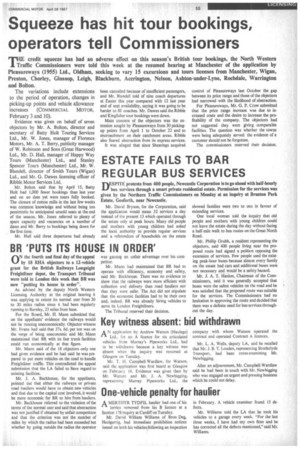ESTATE FAILS TO BAR REGULAR BUS SERVICES
Page 57

If you've noticed an error in this article please click here to report it so we can fix it.
Mr. David Bryson, for the Corporation, said the application would mean 32 services a day instead of the present 13 which operated through the estate only at peak hours. Many old people and mothers with young children had asked the local authority to provide regular services and a referendum of households on the estate showed families were two to one in favour of extending services.
One local woman told the inquiry that old people and mothers with young children could not leave the estate during the day without facing a half-mile walk to bus routes on the Great North Road.
Mr. Phillip Grubb, a resident representing the objectors, said 400 people living near the proposed route had signed a petition opposing the extension of services. Few people used the existing peak-hour buses because almost every family on the estate had cars and additional buses were not necessary and would be a safety hazard.
Mr. J. A. T. Hanlon, Chairman of the Commissioners, said it was generally accepted that buses were the safest vehicles on the road and he was satisfied that the proposed route was suitable for the services. The Commissioners had no hesitation in approving the route and decided that there was a definite need for bus services throughout the day.
















































































































































































